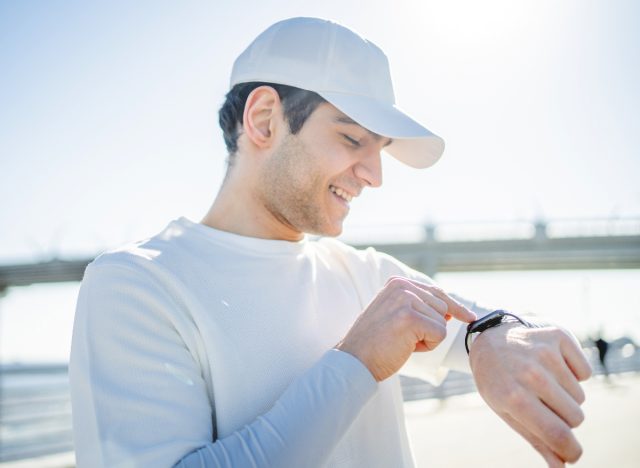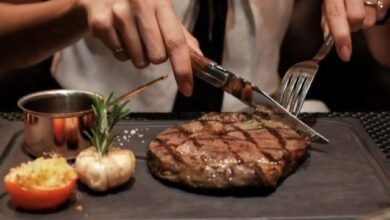Walking 10,000 Steps for Weight Loss: Expert Guide & Workouts

Looking to lose weight but feeling overwhelmed by intense workout programs? You’re not alone. The simple act of walking might just be the answer you’re looking for – but there’s more to it than just hitting that famous 10,000-step goal.
As an elite distance runner and certified UESCA Running Coach with over two decades of competitive experience, I’ve learned that sustainable fitness isn’t about extreme measures. My journey from recreational runner to achieving a sub-70 minute half marathon and becoming a National Champion in Aquathlon has taught me that consistency trumps intensity. A key benefit of walking is its sustainability. While some people might burn out quickly when jumping straight into something like high-intensity interval training, walking is generally more sustainable and easier to manage your effort. Consistency with your activity is what works best for weight loss and fitness improvement. Today, I’m sharing my expertise to help you transform your daily walks into effective weight-loss workouts that actually fit into your life.
How to Make Walking Work for Weight Loss


While walking can be an excellent activity for weight loss, it’s helpful to treat it as dedicated exercise rather than just your daily movement. While walking around shops adds to overall movement and, of course, steps, when focusing on weight loss as a goal, you will likely see more benefit if you approach walking as structured exercise.
Finding a routine that works for you and forming a habit is crucial. This is how I have personally stayed consistent in my training as a distance runner for 20 years. I recommend scheduling your walks at the same time each day so it becomes a natural part of your routine.
Tracking your walks can be fun and motivating, allowing you to see your progress and look back at data to appreciate how far you’ve come. You could use a fitness tracker, GPS watch, or similar device to monitor your progress. It’s important to also have a backup plan for bad weather. As a runner, I’ve found great benefits from training on the treadmill, which is also an excellent tool for walking, particularly if you want to take advantage of the gradient element.
The Truth About the 10,000 Steps Goal


The 10,000 steps goal has been linked back by many as a marketing technique utilized just before the 1964 Tokyo Olympics by a company selling pedometers, it has certainly proven to be a good one with many studies and conversations around it since.
The feelings about the 10,000 steps are generally mixed when it comes to needing to hit the specific target, with research as in Jama Internal Medicine suggesting that walking more steps per day up to 10,000 may be associated with a lower risk of cancer and cardiovascular disease. Additionally, a meta study also shows that health benefits can be achieved with far fewer steps than 10,000 per day. With 2,600 steps associated with a reduction in mortality risk, with progressive health benefits up to around 8,800 steps.
I personally think that the specific 10,000 daily steps goal can become unrealistic for most people; it’s a number that I think can end up as a burden or chore when trying to achieve it every day alongside other life commitments.
I see this when coaching athletes and have experienced this myself when trying to hit a certain amount of running miles per day. It can be easy to become too focused on this and lose out on other benefits. A balanced and varied approach with lower and higher amounts of steps and a varying degree of walking speed and incline will likely be more enjoyable and still give you progression toward your overall weight loss goal.
Why Walking Is More Powerful Than You Think


One common misconception is that walking isn’t “hard enough” or intense enough to support weight loss, and it’s sometimes dismissed as just a starting point.
However, walking can certainly be intense. There are various ways to increase the intensity of a walk through elements such as terrain, speed, and incline.
A key benefit of walking is its sustainability. While some people might burn out quickly when jumping straight into something like high-intensity interval training, walking is generally more sustainable and easier to manage your effort. Consistency with your activity is what works best for weight loss and fitness improvement.
Keys to Maximize Your Walking Workout


Several factors can enhance your walking routine for weight loss, making the activity more suited to you and your current fitness level and personal goals.
Walking speed: Walking at a given pace will burn a specific number of calories, but if you complete portions of the walk at a faster pace, you will further raise your heart rate and likely burn more calories.
Gradient: Exploring routes with hills can not only burn more calories but also help strengthen your legs. Hopefully, you will also have the added benefit of some fantastic views once you reach the top.
Walking time: Consider the time spent walking rather than just counting steps, factors such as your natural gait and height will affect the number of steps.
Carrying supplies: If you are taking on longer walks, it’s important to consider carrying supplies such as water, food, phone, and additional clothing in a backpack. Carrying a load also adds to the intensity, so remember to adjust your pace and distance as required.
Of course, alongside the activity of walking, it’s important to remember that fundamentally, for weight loss, you need to burn more calories than you consume, so couple the walking with a healthy and balanced diet, and you will be on the right path to achieving your goal.
Your Step-by-Step Guide to Building Endurance


Start by establishing your baseline step count using a fitness tracker or pedometer. Many people naturally complete 3,000-4,000 steps daily through their usual day-to-day activities.
There are numerous ways you can add more steps to your daily routine, such as parking farther from your destination or taking a 10-minute walk during your lunch break.
In my opinion, the real key to using walking for weight loss is having targeted walking sessions, even if initially just for 15 minutes.
After 2-3 weeks, extend your walks to 25 minutes, and gradually progress the time of your walk by adding 10 minutes every 2-3 weeks until you reach the 1-hour mark.
Again, review your step count here, and if you are short of your goal, you could add a second walk in the evening, for example, but again, take the same approach as before, building the second walk up steadily.
The key is finding a routine that fits into your lifestyle, be it one walk vs two walks or a faster walk vs a longer walk.
Power Walking Techniques for Weight Loss


Rather than focusing exclusively on step count, consider these strategies for more effective weight loss:
Incorporate speed and cadence intervals into your walks. Focus on using your arms, swinging them at a faster rate, and gradually increasing your cadence (steps per minute).
Explore new and varied terrain, if you typically walk in the city or on a treadmill, plan occasional trips to parks or trails. Different surfaces challenge your muscles in new ways and add variety to your routine, keeping you engaged and more likely to stick with it.
Experiment with incline, whether on a treadmill or by choosing undulating outdoor routes. Walking on an incline raises your heart rate further and can also increase fat burning, as well as giving your muscles a fantastic workout, including the glutes, quadriceps, and calves.
Consider joining a walking group. As a distance runner and endurance athlete, I’ve found group activities incredibly beneficial. Walking with others can help you discover new routes, learn about gear, and pick up useful tips while making the activity more enjoyable.
Try These Expert-Approved Walking Workouts


If you are looking to try some walking workouts, give the below a try. They can be amended based on your ability, but it will give you an idea to start with.
An Indoor Treadmill Activity
Time needed: 30 minutes
- 10 minutes: Easy pace walk
- 10 minutes with 1 minute at 3-4% gradient, 1 minute at 0% gradient (complete set through 5 times)
- 5 minutes steady walk: 1% gradient
- 5 minutes: Easy pace walk: 0% gradient.
An Outdoor Activity
Time needed: 30 minutes
- 10 minutes: Easy pace walk
- 10 minutes: 1 minute with increased cadence and 1 minute with your normal cadence. (Complete set through 5 times)
- 10 minutes: Easy pace walk
Remember, it’s always worth checking in with a doctor before starting a new exercise plan for specific advice.
About the Author: James Rodgers is an elite distance runner and endurance sports specialist, racing for over 20 years. James is a fully certified UESCA Running Coach and has a passion for helping all individuals succeed in finding a balance between sport and life.
And if you enjoyed this article, don’t miss How Long Your Walking Workout Should Be To Shrink Belly Fat.




